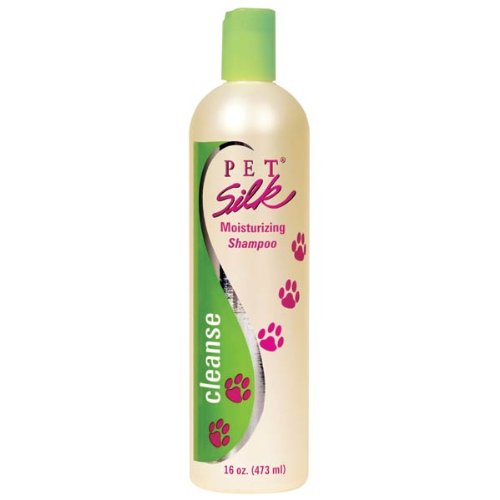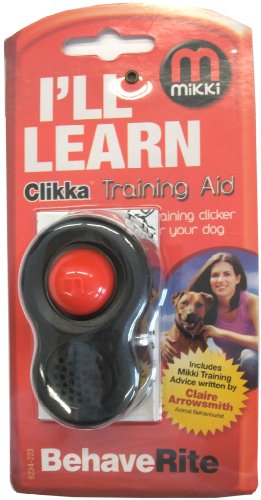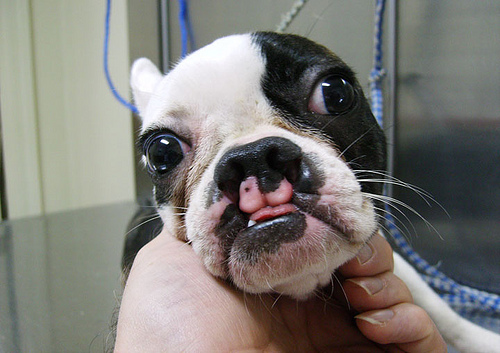
You’ve noticed lately that your pet is pawing at its eye. Maybe the eye is partially closed and tears are running onto the face. Your pet won’t let you look at the eye, which seems to quickly be getting worse as time goes on, so you decide to take it to the veterinarian. Your veterinarian takes a look at your pet, puts some drops in its eye, shines a light on the eye and diagnoses a corneal ulcer. What is a corneal ulcer and what does this mean for your pet? Corneal ulcers are fairly common in pets. In this article, we will explain the anatomy of the eye and the cornea in order to understand the signs, diagnosis, and treatment of ulcers.
The eye is basically a fluid filled bag. The most outer layer of the bag is composed of two parts- the sclera and the cornea. The sclera is the white, tough layer that covers most of the outside of the eye. The cornea is a clear layer. Through the cornea we can see the pupil and the iris, which is the coloured ring surrounding the pupil. Light travels through the clear cornea and through the pupil, which is simply a hole in the middle of the iris. After travelling through the pupil, light passes through the clear lens, which hangs in the fluid in the center of the eye and bends the light depending on whether we are looking close up or far away. Once the light passes through the lens it hits the retina, activating nerves and sending a message to the brain.
So the cornea is important to allow light to enter the eye. This is why the cornea must be clear. The cornea also functions as a barrier against bacteria, chemicals, and objects. It protects the inside of the eye, which is very susceptible to damage. Damage to the eye can cause vision loss. The cornea is not just a single layer. It is actually composed of three layers which all have different functions. These layers allow the cornea to stay clear and function properly as a barrier. The outer layer (the layer exposed to air) is called the epithelium, the middle layer is called the stroma, and the inner layer is called Descemet’s membrane. A mild corneal ulcer involves only the outer layer, while more severe ulcers can involve damage to all three layers.
What is a corneal ulcer? A corneal ulcer is simply a damaged cornea. There are many different causes for this, such as trauma (for example, a cat scratch), bacterial infection, dry eye, and eyelashes rubbing on the cornea. In fact, the most common cause of corneal ulcers in cats is feline herpesvirus, which is a respiratory virus found in many household cats.
Diagnosis of ulcers is fairly simple. A stain called fluorescein is used. If there is damage to the epithelium, the middle layer (stroma) is exposed. Fuorescein will stick to stroma, but not to epithelium. Therefore, the stain will bind to the ulcers where the stroma is exposed.
There are many types of corneal ulcers. Superficial ulcers only affect the epithelium (the outermost layer). These ulcers are usually easy to treat. Most of the time, the pet is given antibiotic drops to prevent bacterial infection. Bacterial infection can cause a melting ulcer, which we will talk about later. If bacterial infection is prevented, the cornea is allowed the time to heal itself.
Deep ulcers involve the middle layer (stroma), and perhaps even the inner layer (Descemet’s membrane) of the cornea. These are potentially more dangerous, because they are very close to the inside of the eye and might create a hole in the cornea. These ulcers are usually much more painful than superficial ulcers. This is because superficial ulcers just have inflammation of the cornea, while deep ulcers often involve inflammation inside of the eye as well. The treatment for a deep ulcer is either frequent medical treatment or surgery.
Some animals are prone to having recurrent ulcers; ulcers that won’t go away or keep reoccurring. These animals will need advanced surgical techniques or very long periods of medication. Another potential scenario is a melting ulcer. This is when an ulcer gets infected. The bacteria produce enzymes that destroy the cornea. The destruction of the eye happens rapidly with a melting ulcer. This is why it is so important to apply antibiotic drops frequently when treating any kind of ulcer.
The cornea is an amazing and essential part of the eye. Damage to the cornea is called a corneal ulcer. If we can prevent secondary bacterial infection (and as a result, prevent melting ulcers) the cornea will heal well on its own. If you think your pet has a corneal ulcer, or any damage to its eye, it is very important to go to your veterinarian right away. Eye damage is usually easy to treat, but only if you catch it right away.
By Ashley O’Driscoll – Pets.ca writer
 Pet Health Part 1
PlantLooks like a Cactus
Credit: Wiki
Pet Health Part 1
PlantLooks like a Cactus
Credit: Wiki
 Great Dog Breeds: the Happy Little Papillon
The first time I was introdu
Great Dog Breeds: the Happy Little Papillon
The first time I was introdu
 Get Started Training Your Dog
IntroductionSo youve got you
Get Started Training Your Dog
IntroductionSo youve got you
 Can Your Dog Live Longer?
Live Long and PlayMans best
Can Your Dog Live Longer?
Live Long and PlayMans best
 Cleft Palates and Cleft Lips in Puppies - Dog Health
Cleft Palates and Cleft Lips in Puppies
Cleft palates and
Cleft Palates and Cleft Lips in Puppies - Dog Health
Cleft Palates and Cleft Lips in Puppies
Cleft palates and
Copyright © 2005-2016 Pet Information All Rights Reserved
Contact us: www162date@outlook.com